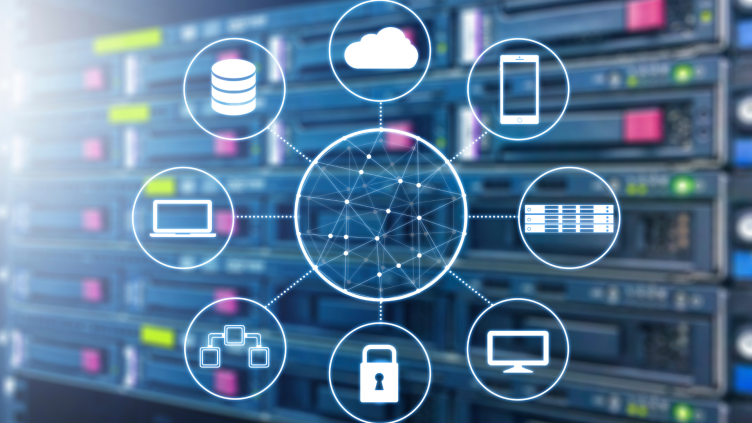
Bits & Bytes: The IT Chronicles
A Comprehensive Guide To Cloud Modernization Strategies On Azure

Modernizing is an ongoing process that needs continuous planning and migration strategies to ensure the applications are updated and aligned with the business needs. According to research, 90% of survey respondents stated that AI is a primary factor driving the modernization of applications and data. In comparison, 80% agreed that failing to modernize would prevent them from taking full advantage of AI.
As cloud modernization is paving the way for the effective use of Artificial Intelligence and Machine Learning, companies are looking to boost organizational performance and accelerate market time. Therefore, it is essential to invest in cloud modernization using the best strategies to maintain operational efficiency and manage costs while maximizing the value of your cloud investments.
What is Cloud Modernization?
Modernization is the process of updating and transforming the organization’s existing infrastructure, systems, applications, processes, and data to a cloud-first approach or the most current versions. It involves migrating or adapting traditional IT systems and applications to take advantage of the benefits offered by cloud platforms.
Cloud modernization is performed to optimize organizational and technological performance, improve the customer experience, and increase time to market for new offerings and services.
Not only investing in modernizing infra, applications, and data can result in short-term achievements, but it also puts a company in a sustainable and flexible state. Cloud modernization helps every organization, no matter at which stage they are in. Cloud modernization is a journey of optimizing cloud costs, enhancing security and efficiency, modernizing applications, and re-platforming cloud-native applications.
Aspects and Approaches to Cloud Modernization
There are several aspects of cloud modernization to know before going ahead and understanding the modernization strategies. This exploration will uncover various approaches to cloud modernization, encompassing migration strategies, performance enhancements, and security considerations. Let’s check.
1. Application Modernization: This involves rearchitecting or rewriting existing applications to be “cloud native.” Cloud-native applications can leverage the capabilities of cloud platforms, such as microservices architecture, containerization, and serverless computing.
2. Infrastructure Modernization: This involves using Infrastructure as a Service (IaaS) offerings to replicate existing infrastructure in the cloud or rearchitecting infrastructure using cloud-native services.
3. Data Modernization: It involves migrating databases and data warehouses to cloud platforms and utilizing cloud-based data management services for better management, accessibility, and analysis.
4. Containerization and Orchestration: Containerization involves packaging applications and their dependencies into containers for consistent deployment. Orchestration tools like Kubernetes automate and manage these app containers.
5. Serverless Computing: Serverless platforms allow developers to build and deploy applications without worrying about the underlying infrastructure.
6. DevOps and Continuous Integration/Continuous Deployment (CI/CD): Cloud modernization often goes hand in hand with DevOps practices, enabling organizations to automate software development, testing, and deployment.
7. Security Compliance: Modernizing in the cloud provides access to advanced security features and compliance certifications offered by cloud providers. This helps organizations meet security and regulatory requirements more effectively.
8. Cost Optimization: Cloud modernization can lead to cost savings by utilizing cloud resources efficiently, paying only for what is used.
Why is Cloud Modernization Important?
Generally, legacy applications are difficult to integrate with new technologies. If such applications fail to improve the user experience, businesses lose the opportunity and fail to create a competitive advantage. Also, businesses end up investing a lot of money in streamlining their operations.
This is where businesses need cloud modernization to achieve scalability, innovation, cost efficiency, and improved performance by migrating and optimizing their applications and infrastructure on cloud platforms like Microsoft Azure.
Cloud modernization makes it seamless for businesses to scale, add new users, and quickly enhance customer experience. This transformation enables businesses to respond quickly to market demands, enhance security, reduce maintenance burdens, and access cutting-edge technologies, ultimately gaining a competitive edge in today’s dynamic digital landscape.
Cloud Modernization Strategies
Generally, there are three significant modernization strategies that businesses need to consider maximizing their value with the least amount of effort.
1. Process Modernization
This includes modernizing your development and work operations to lower the TCO (total cost of ownership) for the workload. For this, businesses can adopt DevOps methodology to promote collaboration between development and operations teams for automating workflows, faster releases, and reducing errors.
2. Application Modernization
This strategy is all about adopting PaaS solutions to modernize any application or framework. Application PaaS solutions use virtualization to run your workload without containers. This means businesses only need to provide code and select configuration options. And the platform itself can manage health, availability, and deployment. So, there is less management involved with the Container PaaS.
3. Database Modernization
Modernizing your databases can improve how you store, process, and feed data. Therefore, businesses can adopt database Platform as a Service (PaaS) and Infrastructure as a Service (IaaS) solutions that offer scalable and managed environments. PaaS will help you simplify your database and updates, and IaaS will provide flexible infrastructure without the burden of hardware management. The goal of database transformation is to improve the reliability, performance, and cost of your data.
However, there is always a cost involved, which quickly escalates if the modernization process is not monitored or optimized properly. This is where businesses need an MSP specializing in Azure cloud modernization.
G7 CR Technologies, A Noventiq Company, is the most trusted MSP (managed service provider) of Microsoft Azure, alleviates the cost concerns associated with the modernization process by conducting assessments, developing tailored roadmaps, and implementing proactive cost optimization strategies. We continuously monitor performance, enforce cloud governance practices, and leverage our cloud expertise to guide clients through the complex decisions of modernization, aiming not only to enhance efficiency and performance but also to maintain cost-effectiveness throughout the journey.
And thus, G7 CR Technologies, A Noventiq Company, has launched the Azure Plus Program that offers a comprehensive range of end-to-end technology services worth USD 50K to modernize your cloud applications, infrastructure, and data on Azure leveraging the latest tools.
How can you leverage the Azure Plus Program for modernization?
Services can be availed as tech investments in 2 stages:
1. Front Loaded Investment: Wherein you get service credits the moment you get onboard.
2. Cloud Consumption: As your monthly cloud usage increases, you keep getting recurring service credits, allowing you to leverage a whole bunch of managed services covered under the Azure Plus Program.
Join the Azure Plus Program today.